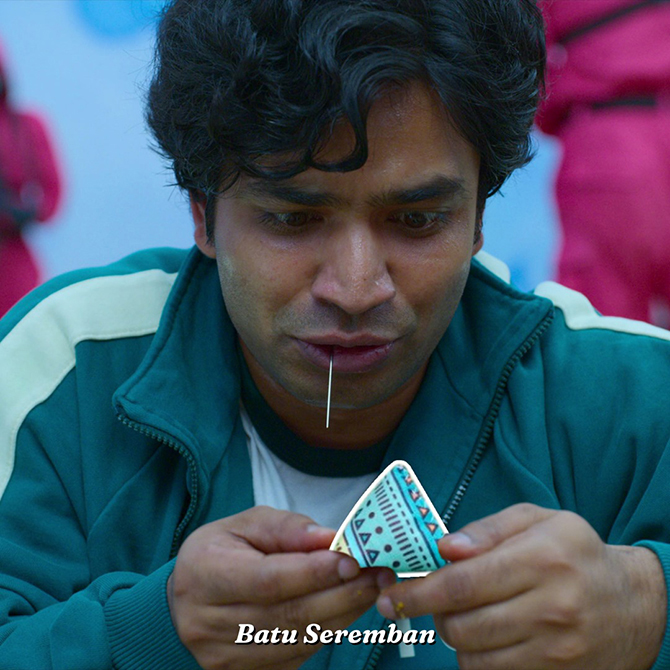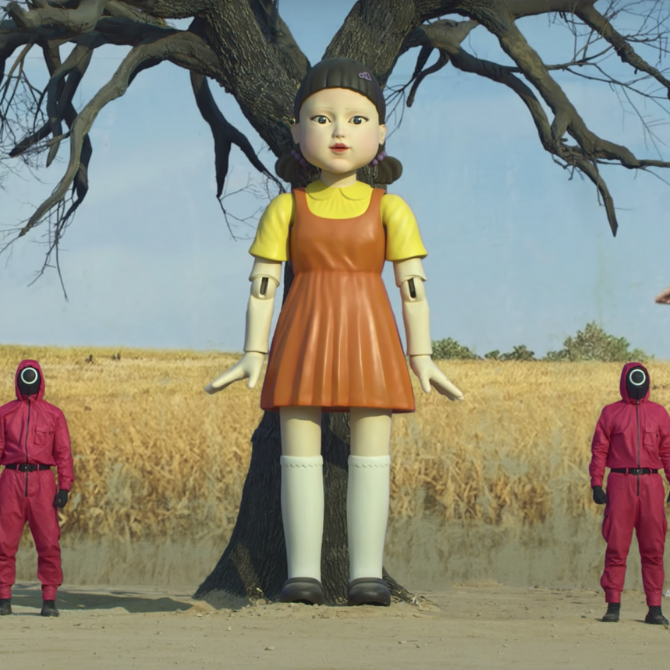Would you play a childhood game if it could make you rich? This is the question asked by Squid Game, the latest Netflix K-drama to become a global sensation. In the show, desperate contestants haunted by mountainous debt and trauma play six childhood games in hopes of winning 45.6 billion won (over RM161 million). Failure, however, comes at a price: Their life.
Watch the trailer here:
The show has introduced us to Korean childhood games, while also sparking curiosity (and debate) as to which Malaysian childhood games would be played in a local version of Squid Game. Below is a side-by-side comparison of the games played in Squid Game and what we think would replace them in the Malaysian version:
Squid Game’s Korean childhood games
Malaysian childhood games
Red Light, Green Light
Tiang Empat
The first game the contestants play is Red Light, Green Light. It typically starts out with a group of people gathered behind the starting line. They must reach the person at the front, who commands them to move during a “green light”. When the “red light” is called, everyone must immediately stop. Those who move during the red light will be eliminated.
In the case of Squid Game, a big statue commands the players to move or stop. She shoots those who are caught moving when they’re not supposed to.
Often played during recess or when students are waiting to be picked up from school, all you need are four poles that are parallel to each other and five players.
Tiang Empat starts with all players gathering in a circle within the centre of the four poles, facing inwards. At the count of three, they must rush to grab a pole. Those who manage to do so must constantly switch places. The player who is unable to grab a pole must try to outwit those who managed to grab a pole by taking their position during the switching of poles.

Dalgona Candy Challenge
Colek Lidi
In this game, players are given dalgona—a traditional honeycomb sugar candy—with the shape of a circle, triangle, star or umbrella stamped in the middle. Players must cut out the shape with only a pin to help them. This is harder than it seems as the candy is brittle and easily breaks apart. Players are eliminated if their candy loses its shape.
Like the Dalgona Candy Challenge, concentration and a steady hand are needed to win at Colek Lidi. Players take a handful of coloured sticks and let them fall naturally on the floor. By using the one odd coloured stick (AKA the “master stick”, which is usually black), they’ll shift sticks away from the pile, one by one, without moving the rest. Points are awarded based on the colour of the sticks a player manages to collect. The rarest colour usually gives the most points.

Tug of War
Tug of War is a well-known game, played for fun and also during sports days. Players split into two teams, each with an equal number of people, and pick up one end of a rope. When the signal is given by the referee, players tug the rope as hard as they can until the centre of the rope—which is marked in red—has passed a line on the ground or the referee. Squid Game‘s version is far deadlier, with the losing team falling a great distance off a platform to their gruesome death.
Pepsi Cola 1,2, 3
Anyone who has attended school in Malaysia would be familiar with Pepsi Cola 1, 2, 3. The game involves players gathering in a circle and being assigned a number. Everyone says “pepsi cola 1, 2, 3” together and jumps back as far as possible. Players then need to call out their assigned number while trying to step on another player’s foot in one leap. Anyone who gets stepped on is eliminated.

Marbles
Batu Seremban
Call it marbles or guli, this game requires two people and tactical skills to excel at it. The goal of each move is to hit another marble so it gets knocked out of the circle. If the player knocks a marble out, then they get to keep the marble for the rest of the game and they get another turn. If no marble is knocked out of the circle, the other player then gets a turn.
Also known as Five Stones in English, Batu Seremban is a fun way to test your coordination. The main idea is to throw the stones or into the air and catch one of the stones before it hits the floor—it becomes your tossing stone. Throw this stone into the air and pick up one stone from the floor, then catch the tossing stone before it hits the floor. Repeat with the rest of the stones, without dropping those already in your hand. There are eight levels in this game, with variations in the number of stones to throw and catch.

Glass Stepping Stones
Stone Skipping
In a usual game of stepping stones, only one player can step on a stone at any time. Once that person moves from the stone, the stone will sink to the bottom of the river.
The Squid Game version replaces stones with a bridge that has panels made from two types of glass: tempered glass and normal glass. The tempered glass panel is strong enough to hold the weight of two people, but the normal glass will shatter under the weight of one person. There are 18 tiles to cross in order to reach the other side, with players given 16 minutes to complete the challenge.
Now played semi-professionally in some countries, the aim of this childhood games is to throw a flat stone across the water so that it bounces off the surface. The winner is the player who manages to get their stones to “skip” across the water the most times and, thus, cover the furthest distance across the water.

Squid Game
Police and Thief
The final, eponymous game is a Korean version of Hopscotch merged with Tag—but with more specific rules. It’s played in an area with the shape of a squid drawn on the ground. Players are segregated into two different groups: Offense and defence. The attacking side, who can only leap on one foot, must step or tap on the squid’s “head”. However, if the defence manages to push an attacker out of the line, the latter is eliminated.
Police and Thief is a Malaysian version of Tag—and it’s a lot more fun when played in a big group. Also known as Catching, there are many variations to this classic game. Players are split into police and thieves, with one side differentiated from the other with ribbons, armbands or something similar. When the mediator says “thief!”, the “police” can start chasing the “thieves”.The game ends when all the “thieves” are caught and put in “jail”.
Which of these is your favourite Malaysian childhood game?

READ: 6 Things you should know about Jung Ho-yeon, the ‘Squid Game’ breakout star
| SHARE THE STORY |




